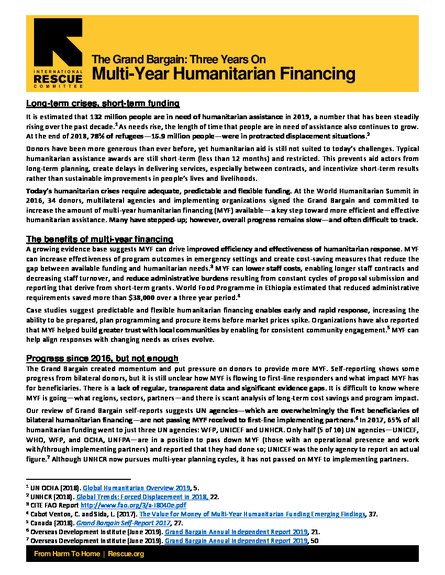
It is estimated that 132 million people are in need of humanitarian assistance in 2019, a number that has been steadily rising over the past decade.1 As needs rise, the length of time that people are in need of assistance also continues to grow. At the end of 2018, 78% of refugees—15.9 million people—were in protracted displacement situations. 2 Donors have been more generous than ever before, yet humanitarian aid is still not suited to today’s challenges. Typical humanitarian assistance awards are still short-term (less than 12 months) and restricted. This prevents aid actors from long-term planning, create delays in delivering services, especially between contracts, and incentivize short-term results rather than sustainable improvements in people’s lives and livelihoods. Today’s humanitarian crises require adequate, predictable and flexible funding. At the World Humanitarian Summit in 2016, 34 donors, multilateral agencies and implementing organizations signed the Grand Bargain and committed to increase the amount of multi-year humanitarian financing (MYF) available—a key step toward more efficient and effective humanitarian assistance. Many have stepped-up; however, overall progress remains slow—and often difficult to track.